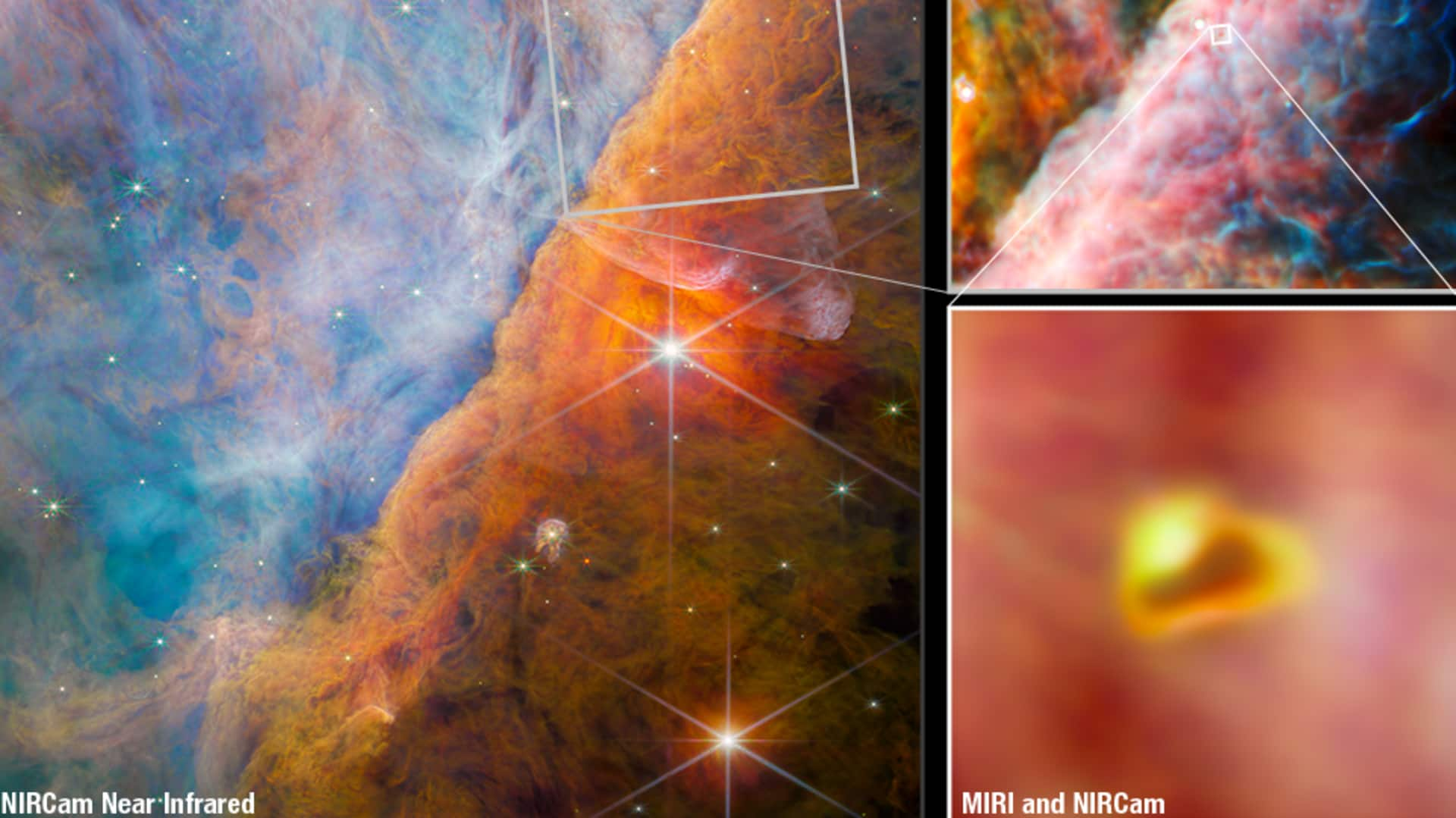
JWST makes first-ever discovery of crucial carbon compound in space
What's the story
Using NASA's James Webb Space Telescope (JWST), scientists have identified a new carbon compound, called methyl cation, for the first time in space. Such carbon-based compounds are of particular interest as they form the basis for life. The newly-discovered compound was found to be a part of a young star system located about 1,350 light-years away in the Orion Nebula.
Context
Why does this story matter?
Webb, which is hailed as the world's most powerful space telescope, allows astronomers to get crucial insights into the universe which are simply not possible using ground-based observatories. Considering that the space observatory is designed to conduct scientific operations for a decade, we can expect to witness more wondrous findings from the telescope in the coming years.
Discovery
Webb can see in infrared light
Studying carbon compounds can help scientists better understand how life on Earth came into existence. And how is that significant? Those findings will in turn help determine if life is possible elsewhere in the cosmos. The latest finding stands as a testament to Webb's unique capabilities. The telescope is equipped to see infrared wavelengths of light, which cannot be perceived by humans.
Disk
Methyl cation was identified in a protoplanetary disk
Webb identified the methyl cation compound in a protoplanetary disk, called d203-506, orbiting a young red dwarf star in the Orion Nebula. These ring-shaped disks are mostly made up of gas, dust, and other debris. When found orbing a young star, these protoplanetary disks hold the essential material for the formation of planets, according to NASA.
Radiation
The d203-506 system receives intense ultraviolet radiation from neighboring stars
Red dwarf stars are much smaller and cooler than the Sun. However, the d203-506 system receives intense ultraviolet radiation from the neighboring young and massive stars. Usually, this UV radiation can destroy organic molecules. But that didn't happen with methyl cation. In fact, researchers theorize this radiation served as the necessary source of energy for the formation of the newly-discovered compound.
Information
'Ultraviolet radiation can change the chemistry of a protoplanetary disk'
"This clearly shows that ultraviolet radiation can completely change the chemistry of a protoplanetary disk. It might actually play a critical role in the early chemical stages of the origins of life," said Olivier Berne, study's lead author from French National Centre for Scientific Research.
Finding
Molecules in d203-506 are "quite different" from typical protoplanetary discs
Once methyl cation forms, it ultimately leads to more chemical reactions that build more complex carbon molecules in space, which makes these compounds significant in "interstellar organic chemistry." In addition, researchers mention that the molecules seen in d203-506 are "quite different" from what's observed in typical protoplanetary disks. However, the team could not detect any signs of water in d203-506.